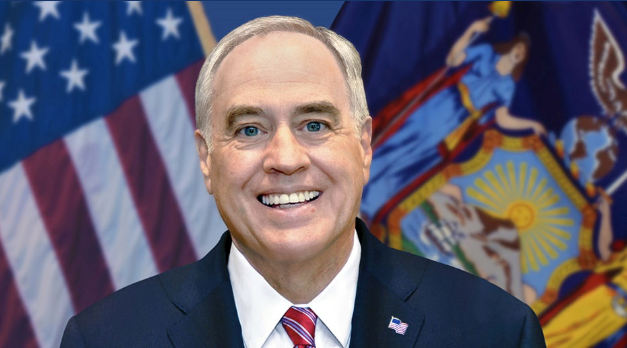A new report on Higher Education in New York by State Comptroller Thomas P. DiNapoli highlights the challenges New York’s public and private higher education sector is facing, including a looming enrollment cliff, growing costs of attendance, and rising student debt.
“New York has a robust higher education sector that attracts students and investment to our colleges and universities, which benefits our state and local economies,” DiNapoli said. “Declining enrollment over the last decade has already hurt the finances of several public and private institutions, forcing a few to downsize or close their doors. New York’s future depends on our institutions of higher education staying competitive by ensuring they are affordable, are diverse, and nurture a spirit of innovation and community in their students.”
In large part due to demographic changes, attracting potential students has become more competitive, and New York’s share of enrollment has decreased. In Fall 2022, there were 896,000 students enrolled across all postsecondary institutions in the state. This was the lowest total enrollment over a 15-year period, a decline of approximately 73,000 full-time students since Fall 2008. The decline was led by the nearly 14% drop in enrollment at public institutions, driven by decreases at community colleges that began in 2011.
The college-age population that drives enrollments at postsecondary institutions has been dropping as a share of the total population nationally, and is forecast to undergo a precipitous drop beginning in 2025 described as a looming “enrollment cliff.” The impact of enrollment declines over the last decade has impacted the finances of several public and private institutions, with a handful of institutions downsizing or closing.
While higher education enrollment typically grows during or immediately after a recession, the COVID-19 pandemic had the opposite impact, with enrollment declining in 2020 and 2021. Social distancing restrictions and a strong job market as the economy recovered may have played a role. The pandemic also spurred a rise in student transfers and withdrawals, or “stop-outs”, and declines in the upward transfer of community college students to higher degree programs, particularly for disadvantaged students.
Outcomes related to earning a degree, including salaries upon graduation, are more positive for New York’s college students than those in other states. Collectively, New York’s institutions exceed the national performance in enrolled students completing their degrees (69.1% compared to 62.3%). However, completion rates at community colleges are also lower than at four-year schools. Less than half of the students in public two-year colleges who began in Fall 2016 completed their coursework by June 2022. Declining enrollment and low completion rates resulted in 3.4% fewer associate degrees awarded in academic year (AY) 2020-21 than in AY 2009-10.
Research has consistently demonstrated that individuals with a college degree earn more than those with only a high school diploma. Median earnings for bachelor’s degree holders in the state are nearly $82,000 higher than for those in peer states, including California, Florida and Texas and neighboring states like New Jersey and Massachusetts.
New York’s public and private average undergraduate charges were both higher than the national average, particularly for in-state costs at two-year public institutions. Private four-year tuition, fees, room and board of $58,423 in New York was 26% higher than the national average of $46,313. Public two-year, or community college, in-state tuition and fees of $5,576 in New York were 59% higher than the national average of $3,501.
Growing college costs nationwide have led to unprecedented growth in student loan debt in New York and the country. Federal Reserve Bank of New York data indicates that in the third quarter of 2023 New York’s per capita student loan debt was $5,830, higher than the national average of $5,370.




